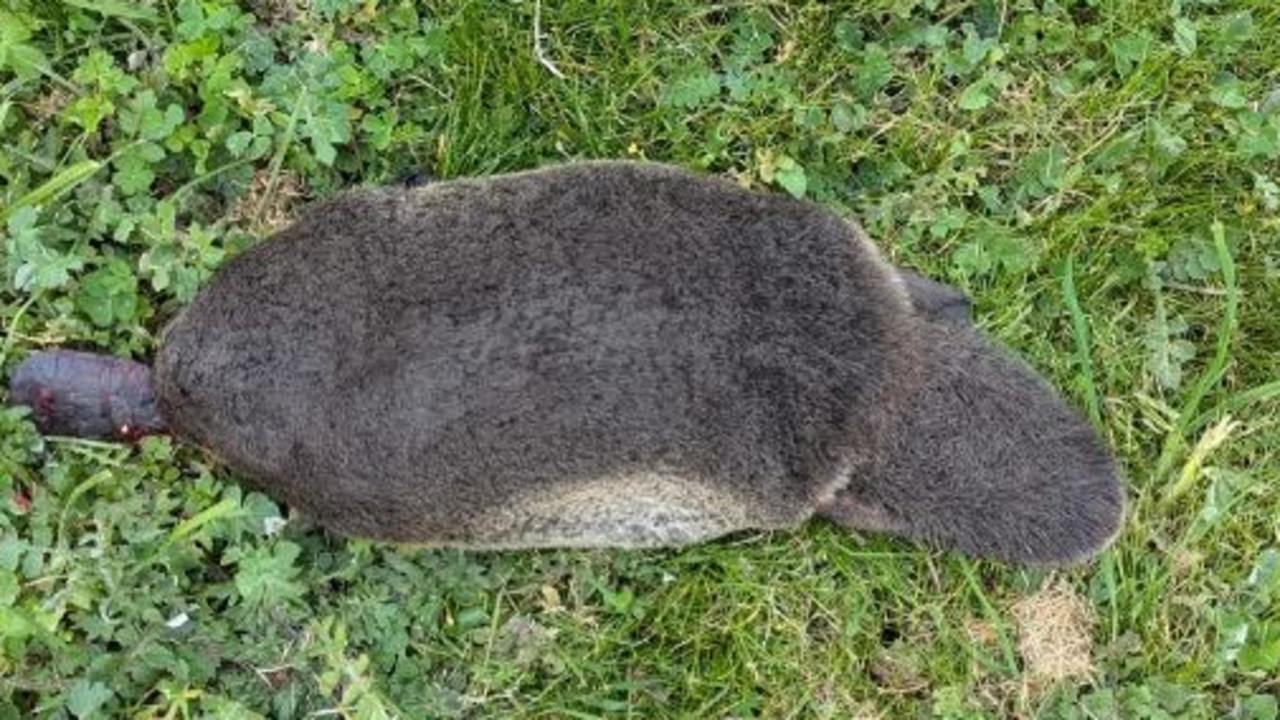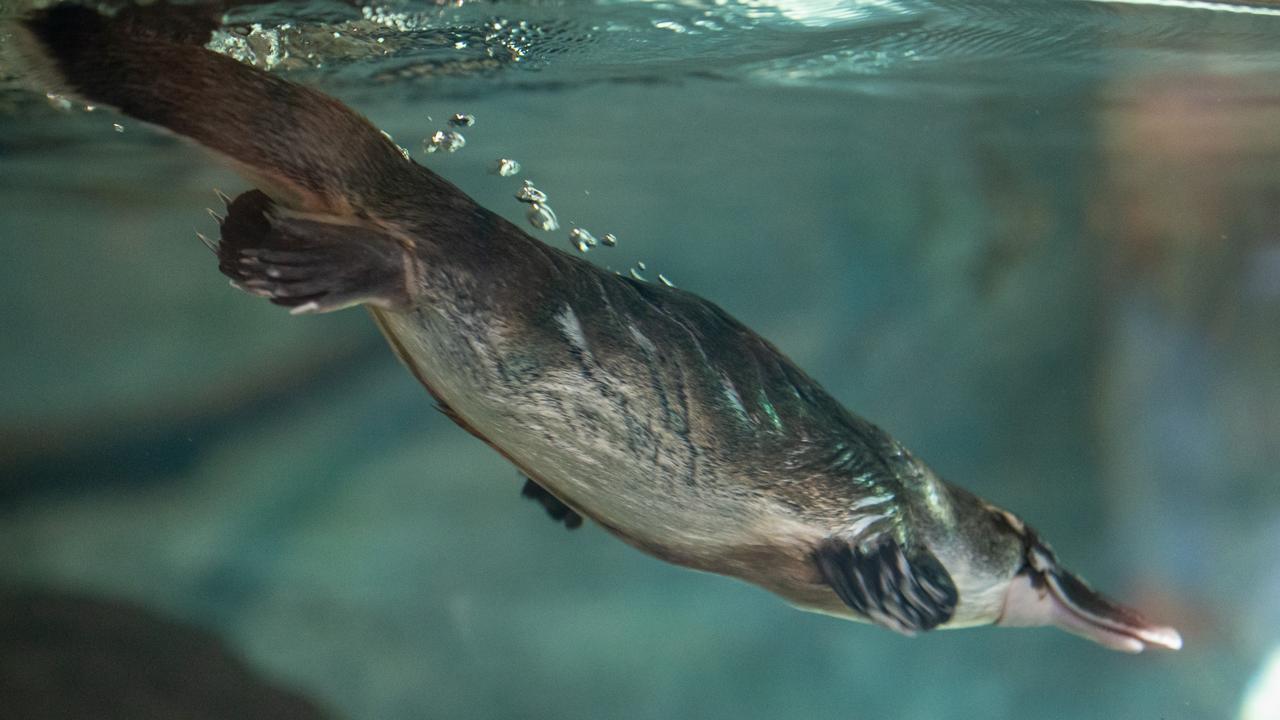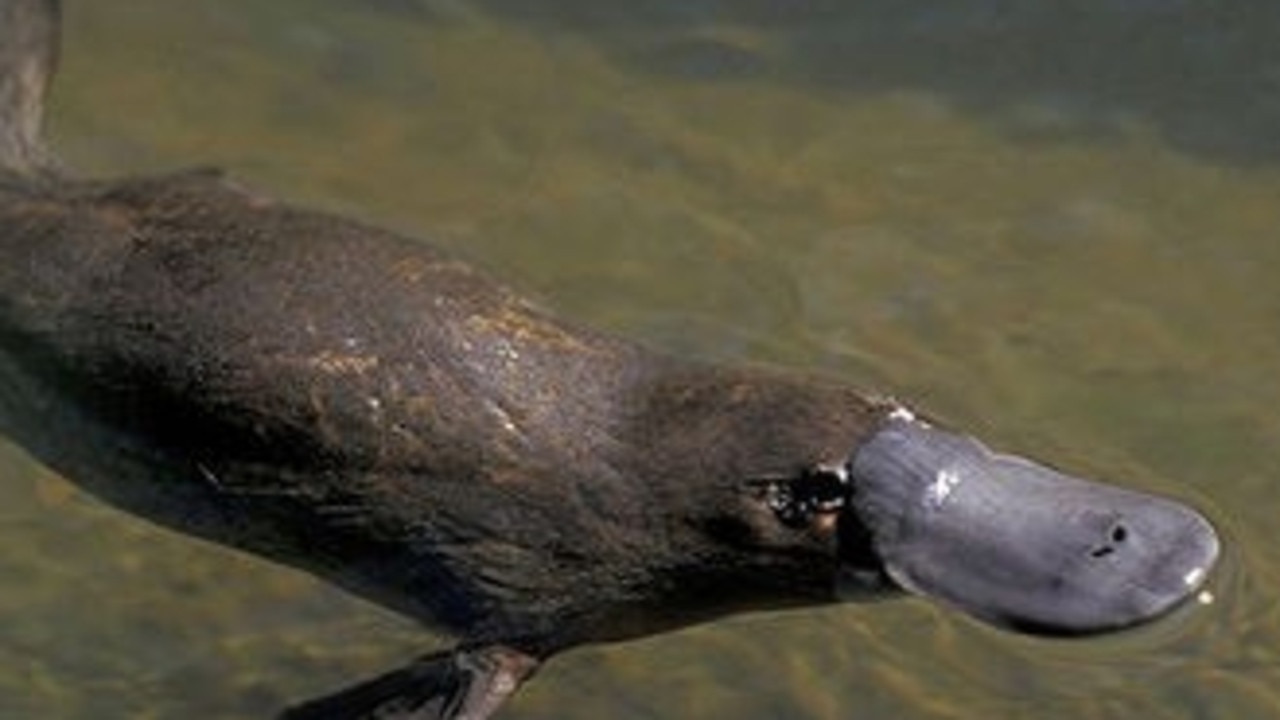Aussies warned after young platypus found dead on front lawn
A horrified woman has shared a photo on social media after making a ‘baffling’ discovery on a suburban lawn. Warning: Distressing
Aussies are being warned to watch out for native wildlife after a woman made a tragic discovery on a suburban lawn.
Taking to social media, the Tasmanian local shared a photo of a young platypus lying dead on the side of a road in Warrane in Hobart, about 4km from the city’s CBD, last week.
In the distressing picture, the platypus is laying dead across the grass, with bloodied injuries on its bill.
“I am beyond baffled as to where it could have come from or been going,” she wrote.
The dead creature was taken to the Bonorong Wildlife Sanctuary in Warrane for analysis.

The director of the sanctuary, Greg Irons, told Yahoo News it was too early to determine what killed the animal, but said platypuses are more likely to be killed by dogs or rubbish than by cars.
Platypuses, the only egg-laying mammals aside from echidnas, are found throughout Tasmania, as well as Victoria, eastern Queensland and New South Wales.
The creatures need healthy rivers and streams where they can swim and forage for food around riverbeds and riverbanks.
Excruciating pain
One of the few venomous mammals, male platypuses have sharp 12 millimetre long spurs on each ankle, connected to venom glands.
If threatened, platypuses will stab an attacker with the spurs, releasing poison strong enough to kill a dog.
In humans, the venom is not lethal but it can cause executing pain.
“Swelling rapidly develops around the wound and gradually spreads throughout the affected limb,” the Australian Museum notes online.
“Information obtained from case histories and anecdotal evidence indicates that the pain develops into a long-lasting hyperalgesia (temporary increased sensitivity to pain) that persists for days or even months.”
The museum recommends those needing to handle a platypus to do so by the end half of the trial to avoid the spur, in case the creature is a male.

Species ‘near threatened’
The iconic Aussie animals have been listed as ‘near threatened’ by the International Union for Conservation of Nature (IUCN).
A 2020 study, lead by UNSW, found the parts of Australia where platypuses are found has shrunk by at least 22 per cent – or about 200,000sq km – an area almost three times the size of Tasmania – in the past 30 years.

New dams, the over-extraction of water from rivers, land clearing, attacks by foxes and dogs, pollution and suburban sprawl were the main factors driving the decline.
The changing climate also presents a serious new threat to platypuses, with more severe droughts, reduced rainfall and intense fires drying out rivers and river vegetation.
More Coverage
“There is a real concern that platypus populations will disappear from some of our rivers without returning, if rivers keep degrading with droughts and dams,” Professor Richard Kingsford, a lead author of the report and the Director of the Centre for Ecosystem Science at UNSW, previously told news.com.au
“We have a national and international responsibility to look after this unique animal and the signs are not good.
“Platypus are declining and we need to do something about threats to the species before it is too late.”






